In this Article
Toggle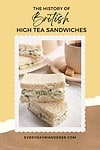

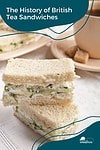
The British tradition of high tea sandwiches is revered and imitated all over the world, far beyond the borders of His Majesty’s tea rooms. But what started this high-class trend, and how did it become the tradition that it is today?
Imagine yourself in a cozy, sunlit room, surrounded by the clink of fine china and the aroma of freshly brewed tea. This is the world of British tea time, a tradition steeped in history and elegance. From the aristocratic salons of the 19th century to today’s chic tea rooms around the globe, high tea sandwiches have become synonymous with sophistication and leisure. Let’s explore the origins of this charming tradition, unravel the differences between high tea and afternoon tea, and, of course, delve into the delightful sandwiches that make these occasions so unique.

To help offset the costs of running EverydayWanderer.com, you’ll find affiliate links lightly sprinkled throughout the site. If you choose to make a purchase via one of these links, there’s no additional cost to you, but I’ll earn a teeny tiny commission. You can read all of the legal blah blah blah (as my little niece says) on the full disclosure page.
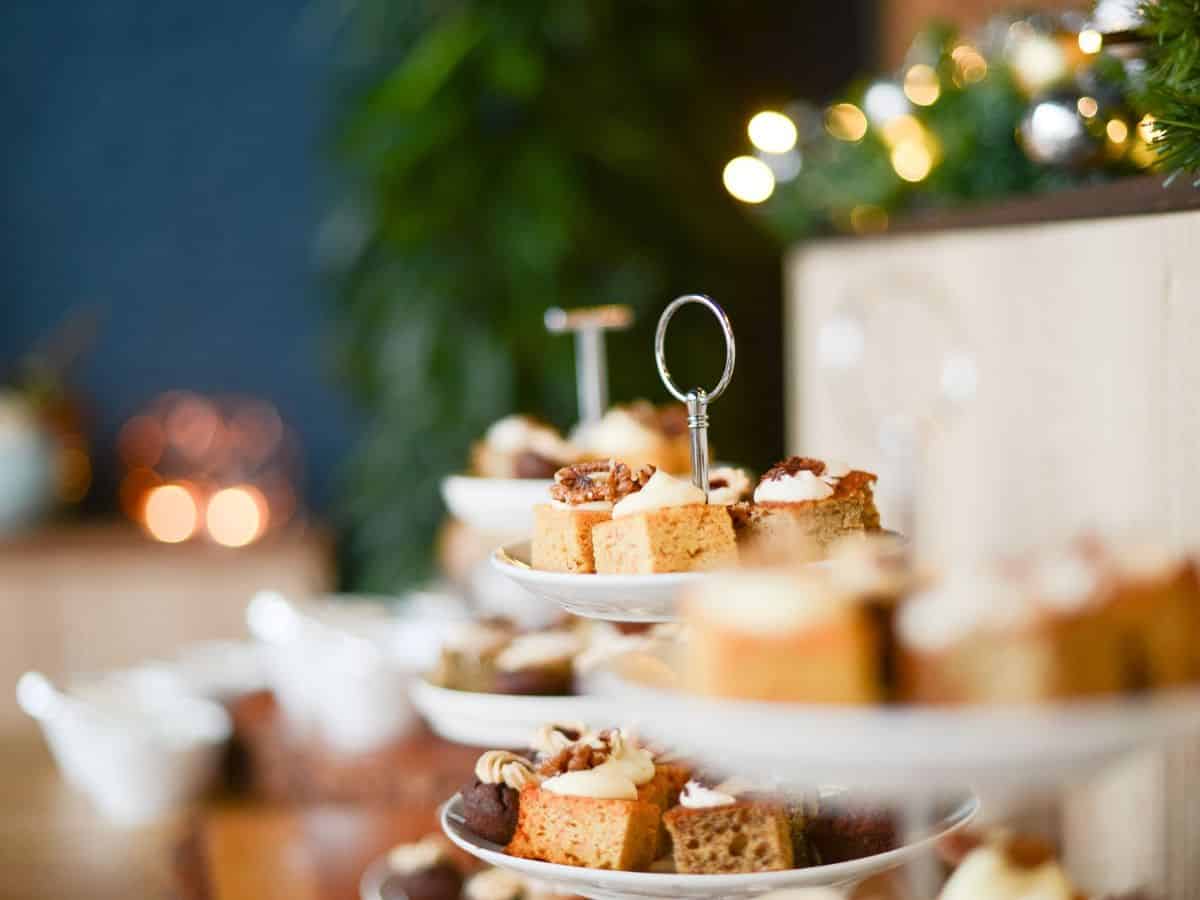
What is British High Tea?
British high tea, also commonly — and mistakenly — referred to outside of Britain as “Afternoon Tea,” is a quintessentially British tradition usually served in the late afternoon, around 4 or 5 pm.
High tea consists of savory and sweet items such as elegant tea sandwiches, scones with clotted cream and jam, cakes, and pastries. The tea is usually a blend of black teas and is served with milk and sugar. High tea sandwich recipes and dishes vary from region to region in the UK, but they are always elegantly presented and served on tiered stands.
Today, British high tea is enjoyed in private homes and hotels, tea rooms, and restaurants worldwide.
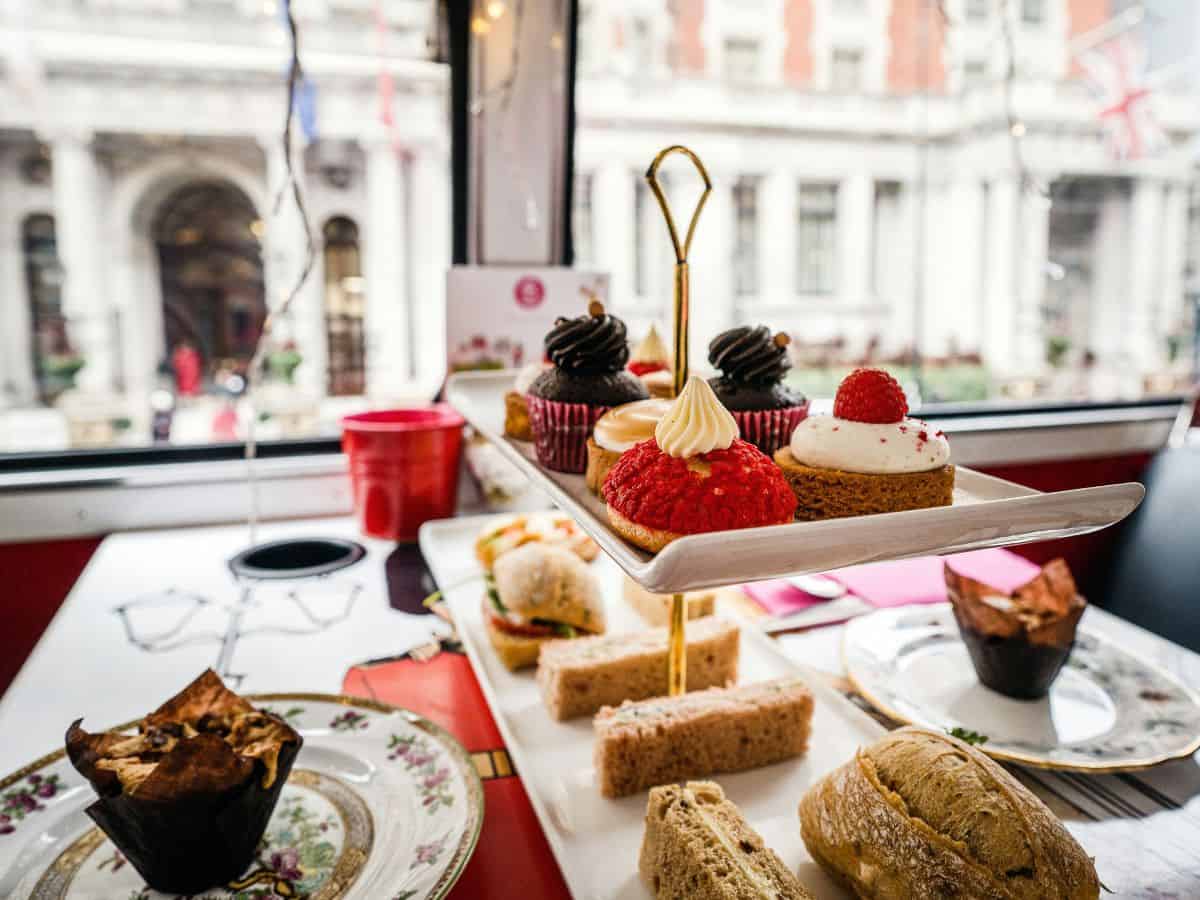
What Is the Difference Between High Tea and Afternoon Tea?
Though they are often used interchangeably outside of Britain, high tea and afternoon tea are similar traditions that symbolize two very different things. The difference between these two terms encapsulates the surprising, class-based dynamic at the heart of British society.
Afternoon tea is a small, tea-centered meal historically enjoyed while seated in cozy parlor chairs or outside in the garden. It brought an air of sophisticated ease and was the purview of the aristocracy, who had time to spare on lengthy dining ceremonies between lunch and dinner.
Despite its lofty name, the English served high tea to laborers as a full meal after work, often served at dining tables with high-backed chairs. Today, many working-class British families refer to supper as “tea,” a remnant of this tradition.
Thus, just like private schools in Britain are called public schools, so does high tea represent a middle-class, working-man’s tradition, while its more casually named cousin was reserved for the upper class.
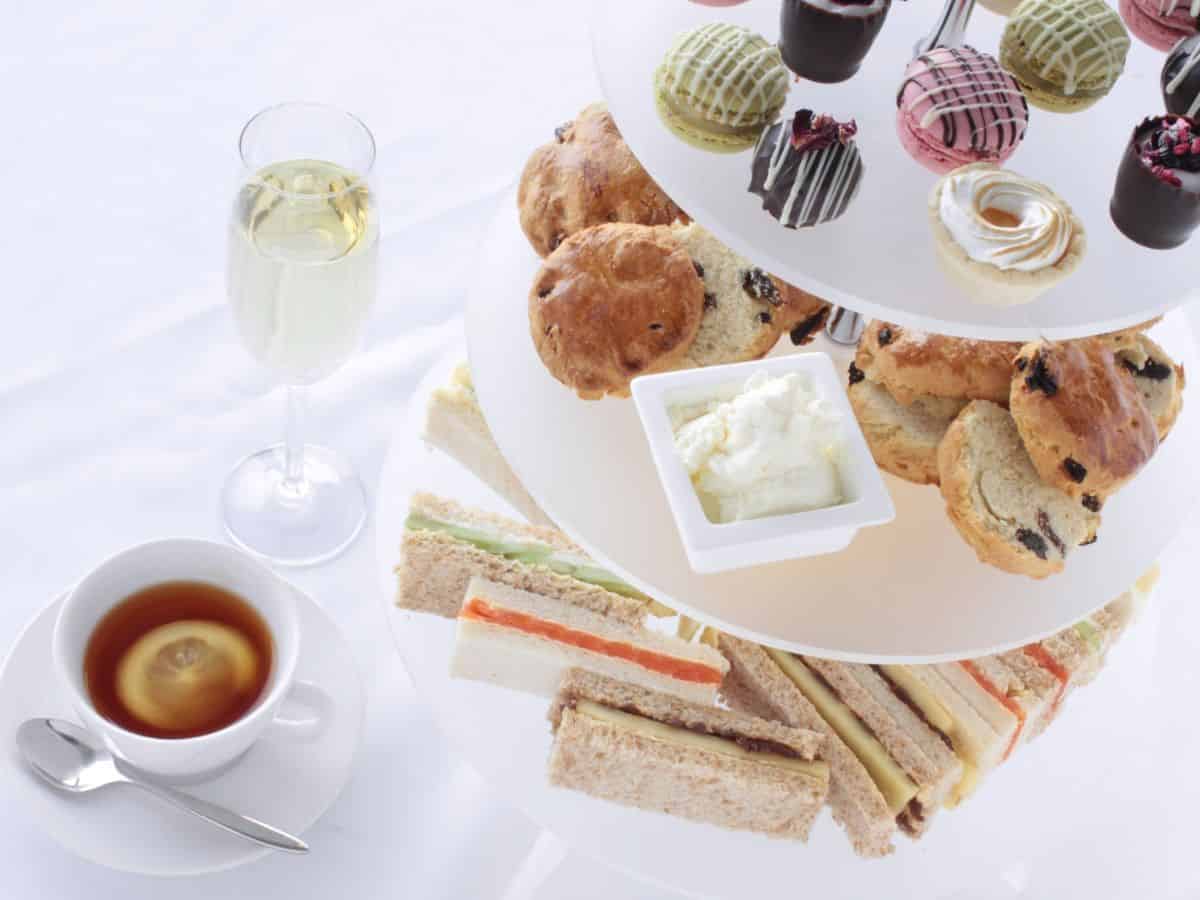
So Should You Refer to Afternoon Tea as High Tea?
Today many people outside of the United Kingdom refer to every British tea ceremony as high tea. However, high tea is a more substantial meal than afternoon tea. It is typically served around 4 or 5 pm, and it includes savory and sweet options.
So when people call The Ritz in London to make reservations at this hotel’s revered traditional tea spread, they often ask for “high tea.” But you really shouldn’t use those terms interchangeably. Apparently, when a customer calls the Ritz Carlton asking for high tea at 2 pm, the staff automatically knows they’re American. That’s because a British person would always know that high tea is only served after work when a real British laborer would have it.
So when making reservations for tea before 4 pm, refer to it as afternoon tea. If the reservation is after work hours and is a more substantial meal, high tea is perfectly appropriate (though what you will get at the Ritz Carlton will be far from the post-work supper of British workers in the 1800s).
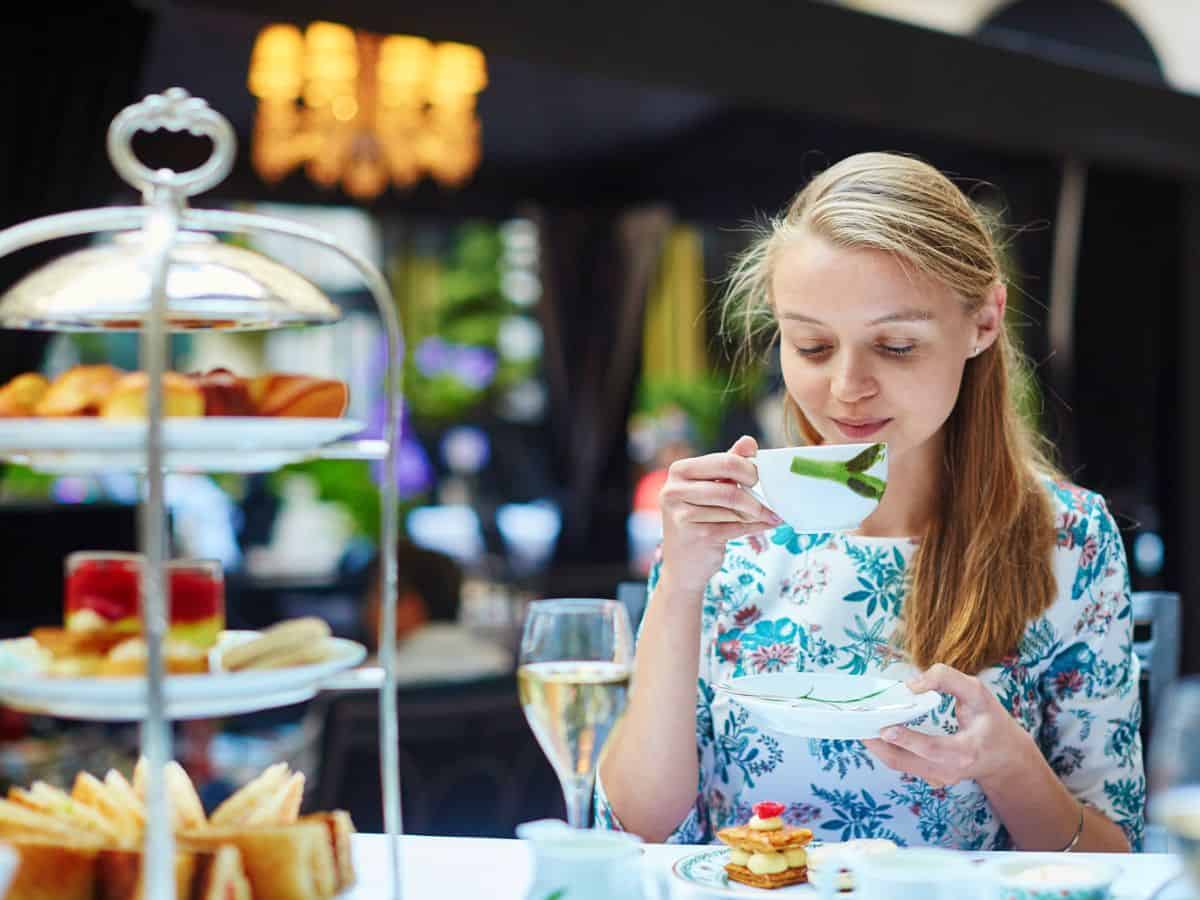
What is the Origin of British Afternoon Tea?
British afternoon tea has its roots in 19th century England, during the Victorian era, as a way for the upper class to satisfy their hunger between lunch and dinner.
Like many dishes, tea made its way from China to Britain in the 17th century when King Charles II and his wife Catherine de Braganza popularized the drink. But it wasn’t until a few centuries later that it became an entire ritual.
It is believed that the Duchess of Bedford, Anna Maria Russell, started the tradition of afternoon tea in the 1840s, as she found herself feeling hangry between lunch and dinner. She began having tea with a light snack in the afternoon and soon began inviting friends to join her. This routine eventually evolved into a social event amongst the upper classes, with elaborate tea services featuring delicate finger sandwiches, scones, cakes, and, of course, tea. This meal was often served outside in the fresh air, especially in warm climates like India or in the warmer summer days in Britain.
Afternoon tea became a symbol of refinement and was associated with sophisticated leisure activities.
What to Serve for British High Tea?
When preparing a spread for high tea, be sure to offer a combination of savory and sweet items to your guests.
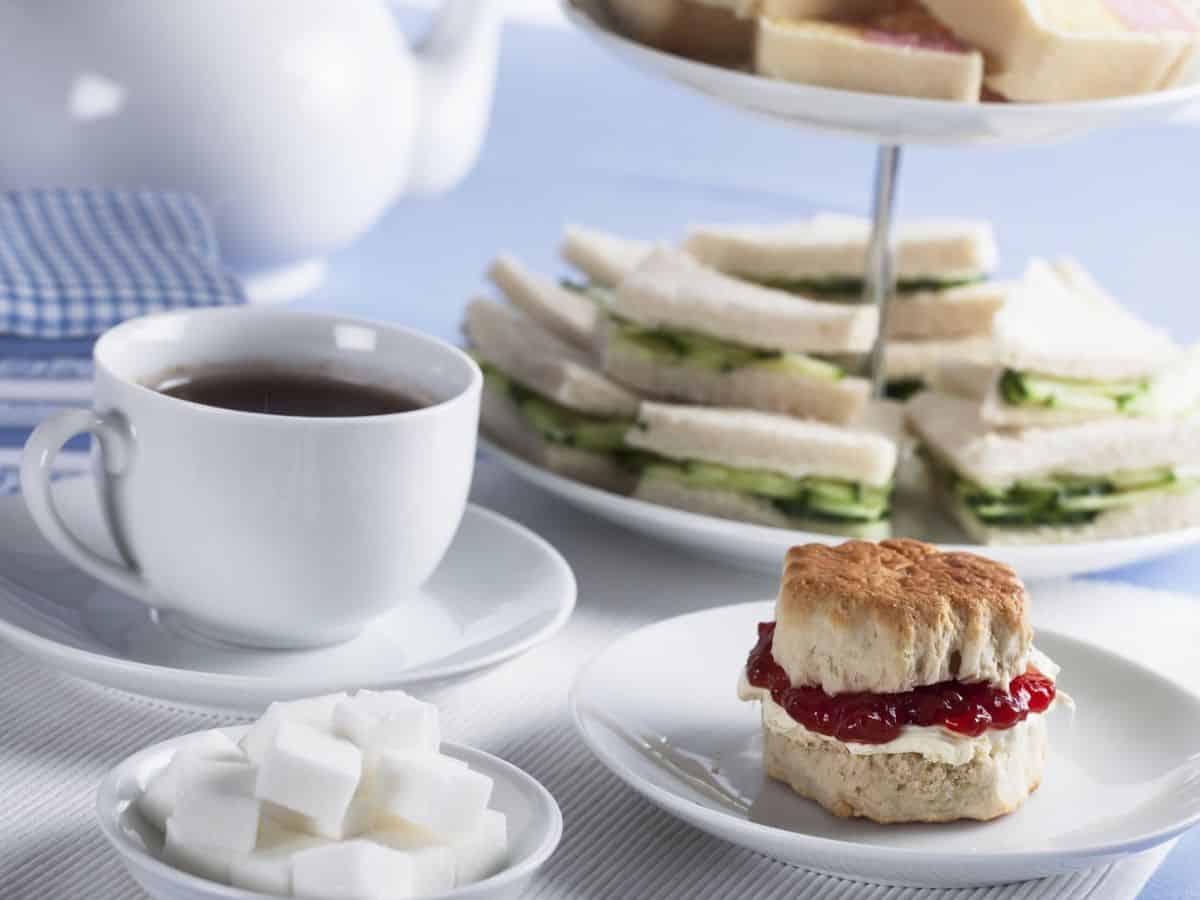
Savory Bites
When it comes to high tea, savory bites are just as important as sweet treats. Sandwiches are the cornerstone of any tea, delivering a delightful array of flavors. Each bite-sized sandwich is a testament to the tradition’s elegance and simplicity.
Look for these savory bites at high tea:
- Sandwiches — served on white bread or pumpernickel bread, classic tea sandwiches include savory fillings, butter or cream cheese, and fresh herbs.
- Finger foods — like sausage rolls.
- Scones — whether they are filled or plain, scones are often served with clotted cream and strawberry jam.
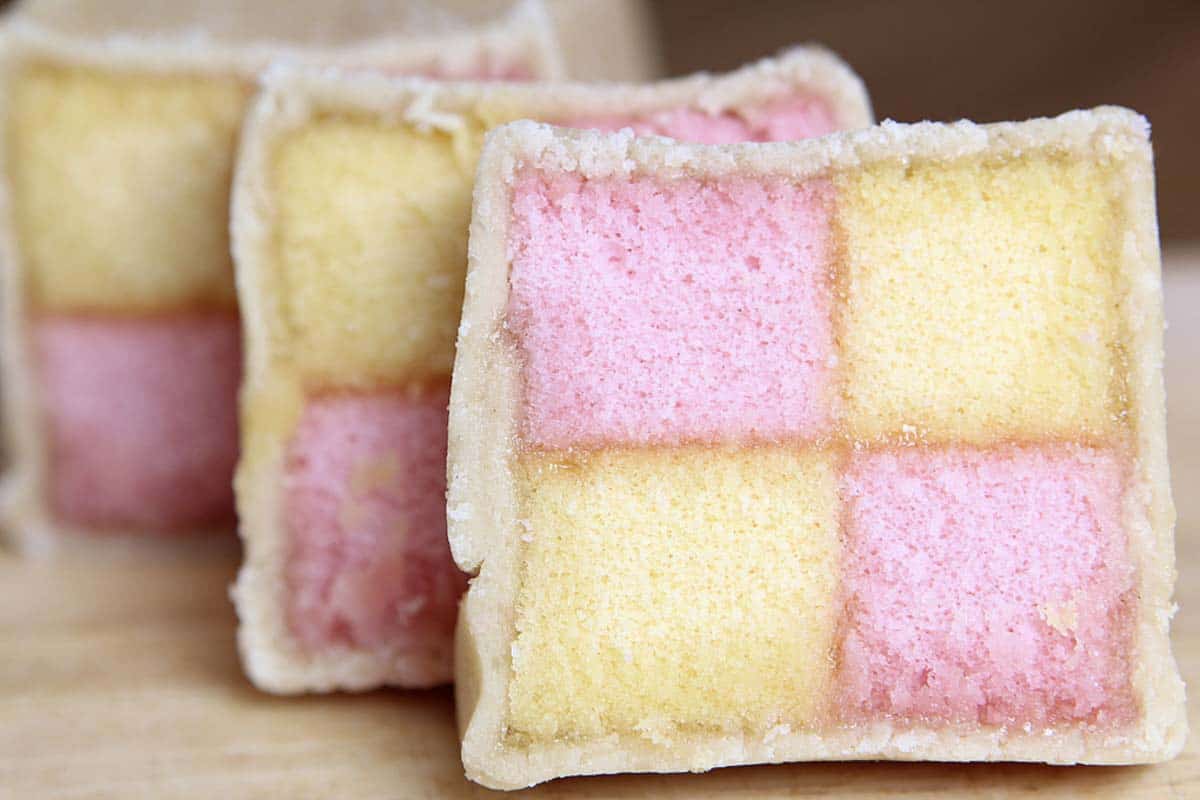
Sweet Treats
After savoring the savory, it’s time to indulge in the sweet. No tea would be complete without an assortment of delectable pastries and cakes. Accompanied by a warm cup of tea, they form the perfect ending to a relaxing afternoon pick-me-up.
Look for these sweet treats at high tea:
- Pastries — little petit fours and fruit tartlets.
- Cakes — Battenberg cake, Victoria sponge cake, and lemon drizzle cake are common choices.
- Biscuits (or cookies as we call them in the US) — shortbread cookies and macaroons can be found on any high tea cookie tray.
Finally, no tea time is complete without a good cup of tea, and black tea such as Earl Grey and Darjeeling are favorites.
English tea snacks are traditionally served in a three-tiered display with savory selections on the bottom, scones in the middle, and sweets on the top. They should be enjoyed from the bottom, up, beginning with the tea sandwiches and other savory finger foods.
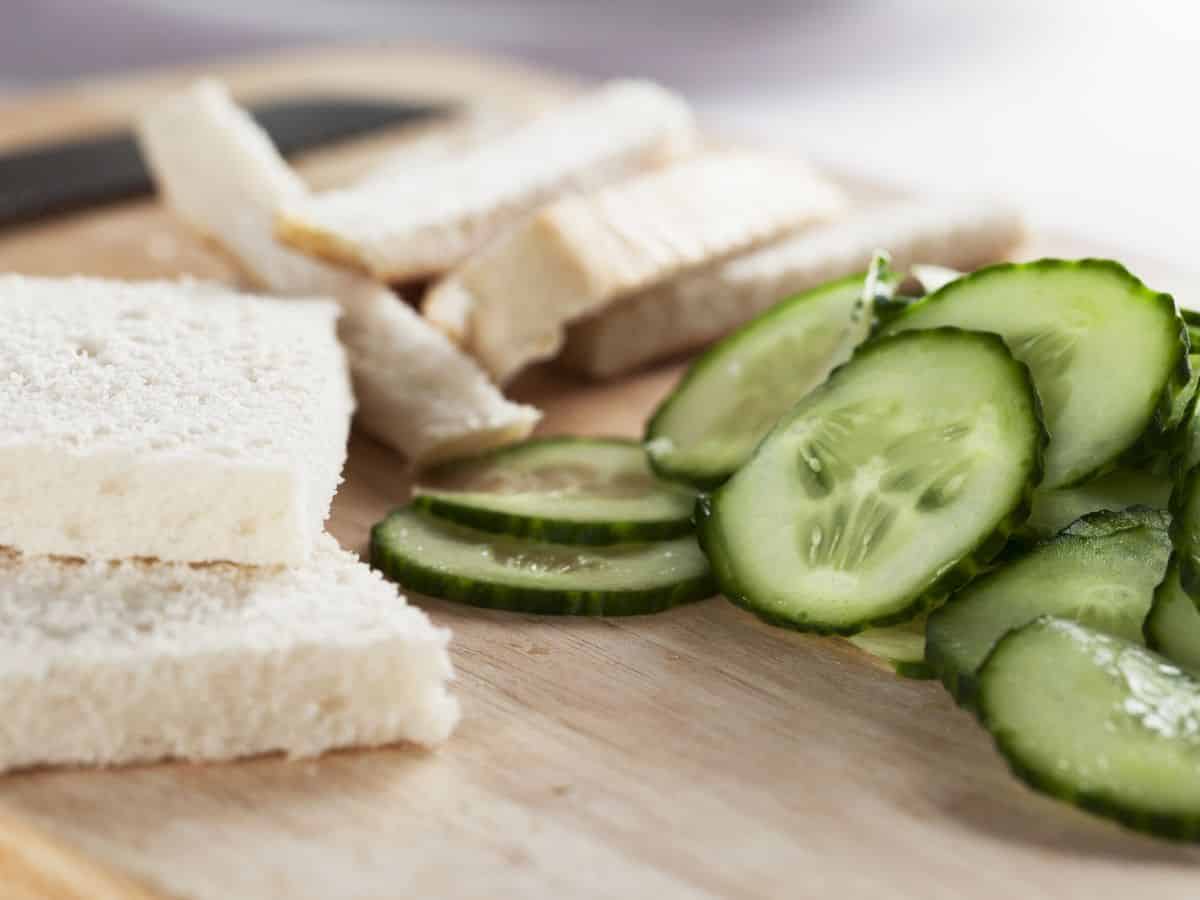
What Types of Sandwiches are Served with Afternoon Tea?
Sandwiches are a staple of the afternoon tea table. With two slices of bread held together with a tasty filling, the mini sandwiches are typically served in small triangles or rectangular shapes. Some chefs will use a round or scalloped edge cookie cutter to add an extra touch of elegance to fancy tea sandwiches.
Classic tea sandwich fillings include:
- English cucumber and cream cheese,
- smoked salmon and cream cheese with fresh dill,
- egg salad,
- chicken salad,
- ham and mustard, and
- beef and horseradish.
English tea sandwiches are usually served with crusts removed to be more refined and easy to chew, and the bread is often thinly sliced. They are a light and refreshing accompaniment to the sweet cakes and pastries that are also served.
Removing the crusts is also a nod towards the aristocratic roots of afternoon tea, when one could afford to throw out perfectly nutritious parts of the bread in favor of dainty cakes and sponges.
Classic cucumber tea sandwiches perfectly symbolize this tradition. This popular tea sandwich features a vegetable that was hard to grow and provided no real nutritional value — key reasons why the British nobility in India chose them to be their tea-time snack.
Sage Advice: If you are enjoying an afternoon tea party at home, plan to serve about four sandwiches per person.
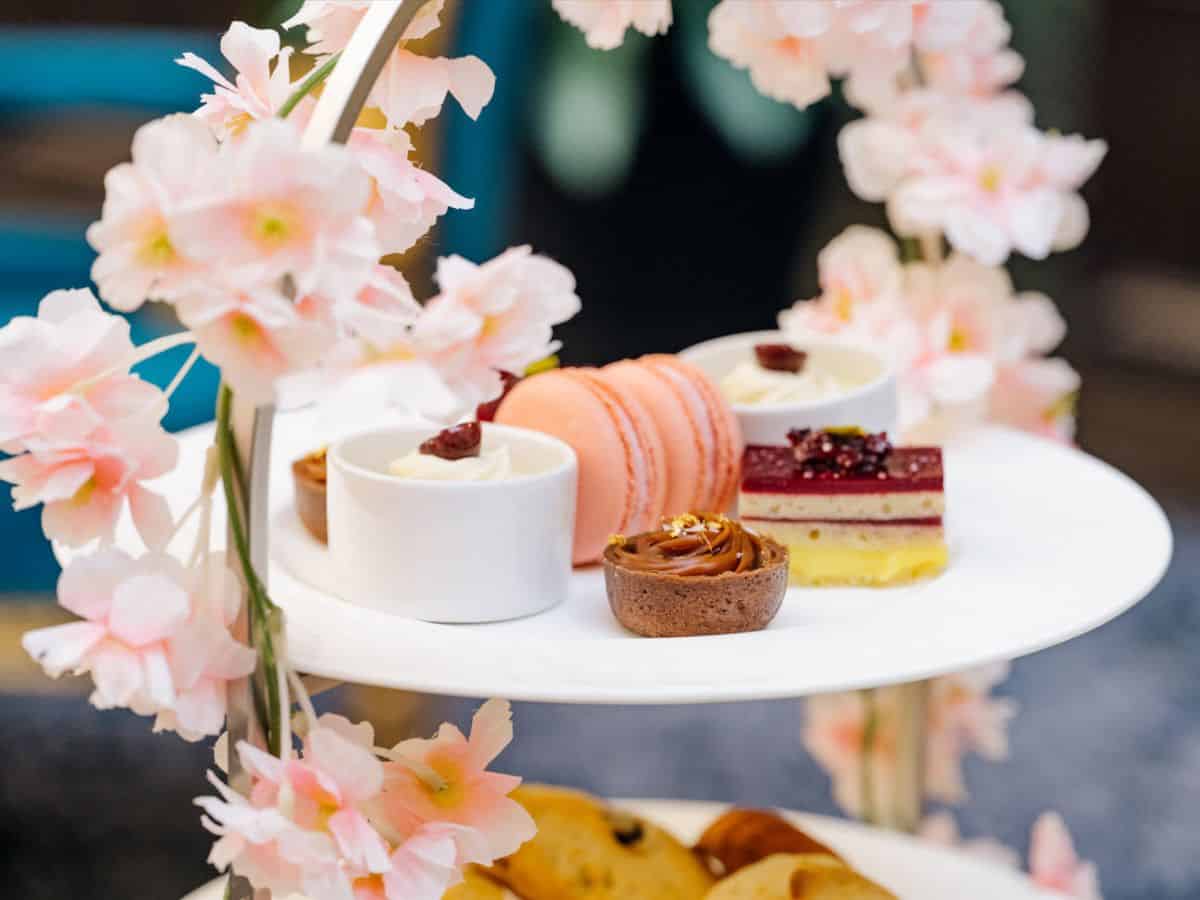
What Does Afternoon Tea Look Like in Britain Today?
Today, afternoon tea in Britain is a ceremony reserved for special occasions.
“Afternoon tea is a real treat in England. You often buy it as a gift for people (hugely popular for Mother’s Day) and it’s something to savor,” according to Mandy Applegate of Splash of Taste.
“Top-end afternoon tea at places like the Savoy or the Ritz in London is like a theater production in itself, and you enjoy the venue as much as the afternoon tea. For those wanting an extra treat, you can usually upgrade to include a glass of champagne.”
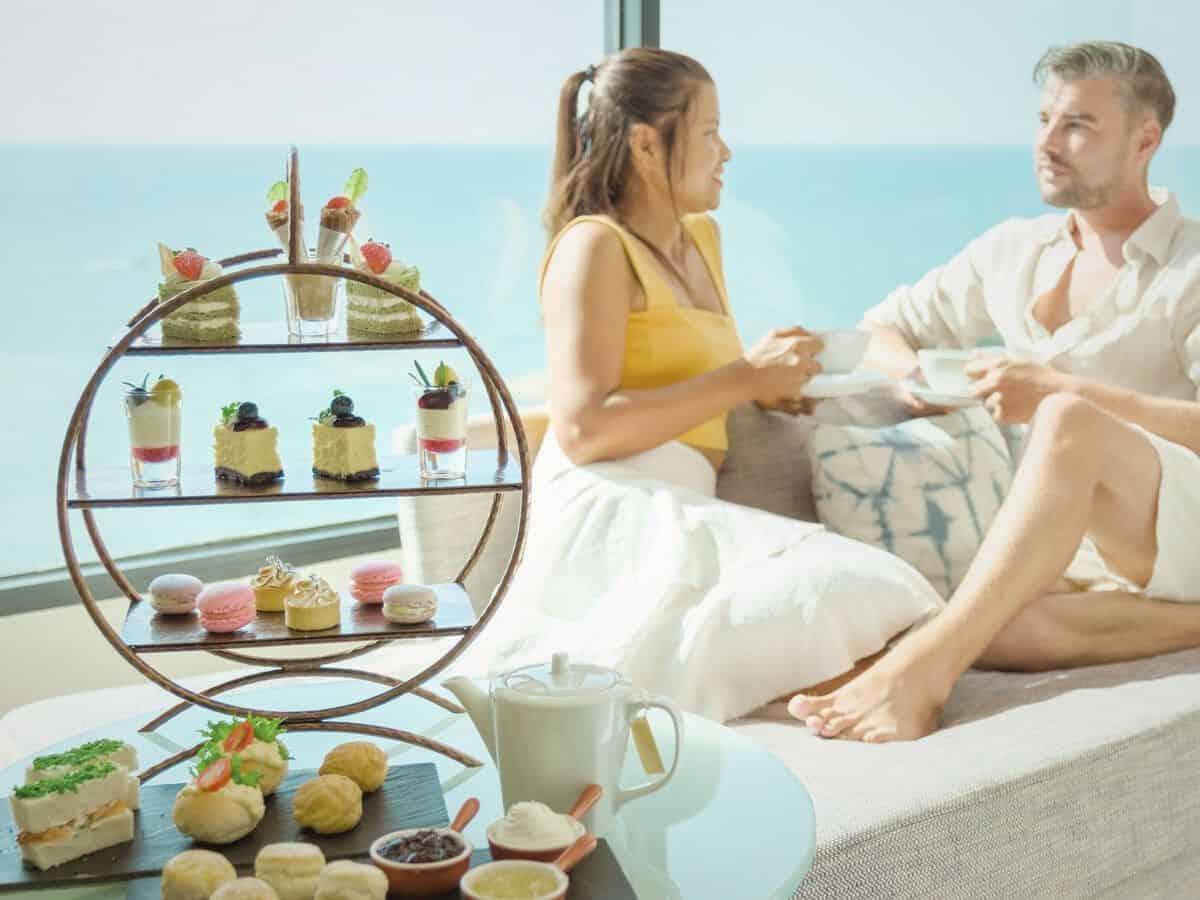
How High Tea Traveled From Britain All Over the World
Just as tea arrived in Britain due to colonization, so did the traditions of afternoon and high tea travel the world over as Britain expanded its reach across the globe.
As a soft-power colonizer, Britain brought many of its traditions to the countries that became a part of the British Commonwealth Empire, like Australia, Canada, India, and South Africa.
Over time, teatime traditions morphed to look as elaborate as the Duchess of Bedford’s Afternoon Tea, or as common as the High Tea of the Scottish workmen, which often included warm pies and cold cuts.
“Hot tea is one of my favorite afternoon pick-me-ups. Growing up in South Africa, my grandparents often enjoyed afternoon tea at home. My mother brought this tradition to my family in America, and I have grown to love it,” recalls Susannah Brinkley Henry of Feast + West.
“For me, afternoon tea at home can include cookies or other sweet snacks served to company. On other days, a simple cup of tea makes me appreciate that tradition. Either way, a cup of tea is always a chance for me to slow down and enjoy the day.”
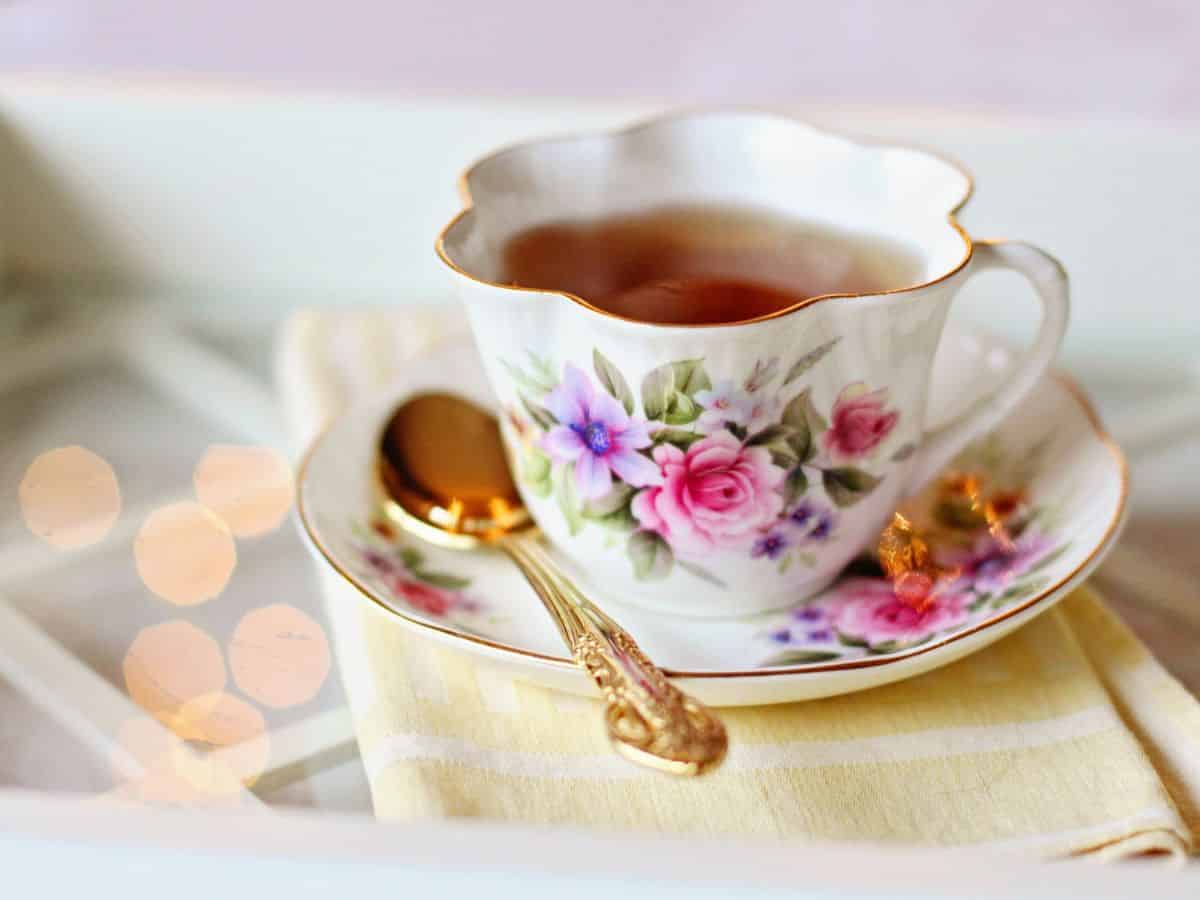
Steeped in History and Served Worldwide
With a mix of high-falutin’ aristocrats and everyday laborers as fans, British tea sandwiches have a fascinating history. Wherever you are in the world today, you can likely find a local afternoon tea to get a taste of this British tradition. Just make sure that you distinguish high tea from afternoon tea, and you’ll be well on your way to sipping tea and noshing on delicious treats in style!
What are Your Favorite Tea Sandwiches?
Do you lean toward classic offerings, like the cucumber sandwich, with its delicate balance of crisp cucumber and soft bread? Or, do you prefer the rich flavors of smoked salmon sandwiches? Have you made your own high tea sandwiches at home? Or perhaps you’ve discovered a local tea room that serves unforgettable egg salad tea sandwiches? Share your favorite high tea sandwich experiences, recipes, or even your sandwich-making disasters in the comments below.
Portions of this article originally appeared on Food Drink Life.
Ready to Go?
Use These Helpful Links to Book Your Trip!
- Find low fares with airfarewatchdog and Skyscanner
- Book your plane ticket with Expedia or Kayak
- Or take the scenic route on an epic road trip in a rental car or an RV from Outdoorsy
- From hotels to private homes, find the perfect accommodation with Hotels.com or Vrbo
- Travel in style with a suitcase, carry-on, backpack, or handbag from eBags
- Save on tickets to attractions, sightseeing tours, and more with CityPASS, Tiqets, and Viator
- Don’t leave home without travel insurance from AXA
- Discover the sights, history, and culture of your destination with an interactive scavenger hunt
- Need something else to plan your perfect trip? Visit my travel resources page for more trusted partners. Happy wandering!
Sage Scott
Thank you for sharing!


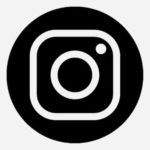

Wow! I had no idea there was such a rich British tradition around high tea sandwiches! I’ve always been a bit clueless about this post. Excited to try some of these elegant sandwiches at my next tea time!
The classic cucumber tea sandwich is always a good choice!
I will never forget my first time at British high tea. It really had me wondering about those sandwiches! Thanks for breaking it down for us so clearly.
This article was so fascinating to read about the history and tradition behind British high tea sandwiches.
This article brings back so many great memories! I used to have High Tea parties with my Girl Scout troop. Serving different sandwiches and teas, I would explain the traditions and how they should dress and act. It was so much fun!!!
That sounds like a blast. What an awesome troop leader you must have been!
Wow!!! I grew up in the UK and I didn’t know all of this! I feel I have let my heritage down 😉
When I flew to New Zealand last year they serve tea and finger sandwiches during the flight and they were delicious. I have no idea what time zone I was in at that point, but it was served between lunch and dinner.
I have loved reading your article.
Tea and finger sandwiches on an international flight sounds divine!